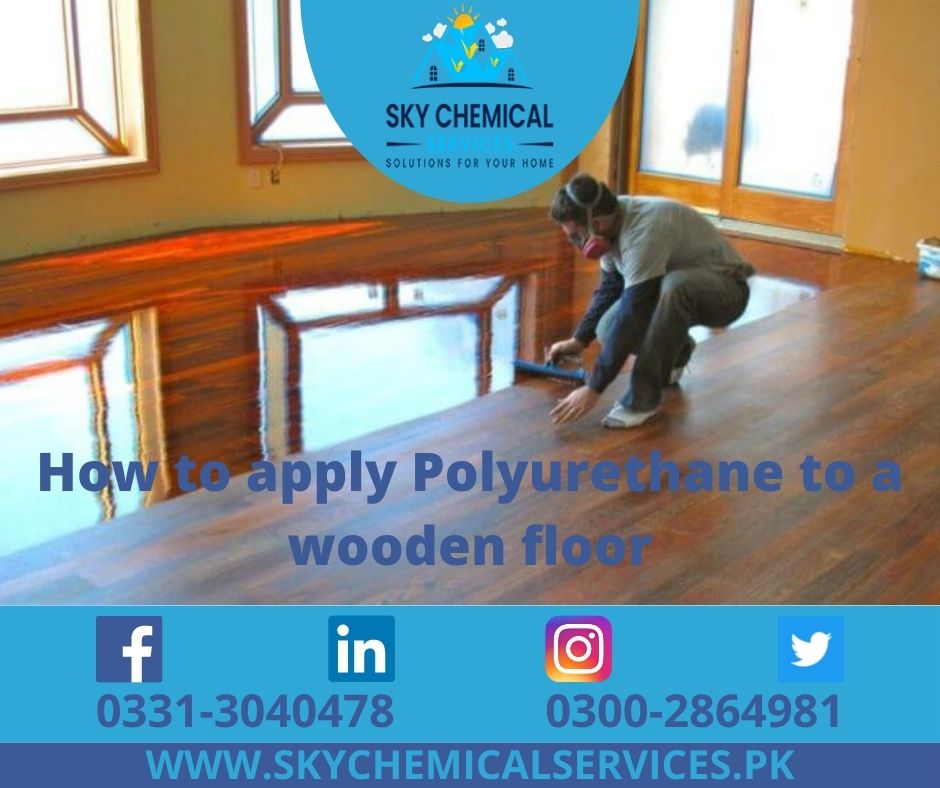
Your house is a great place to have fun and stay at peace with your loved ones. To keep it safe from damage and harm, you need to take care of it with different methods and techniques, one of which is waterproofing your fixtures, roofs and walls with specialty chemicals and paints. Among the materials applied on the surfaces, polyurethane coating is one of the best choices you can have. It is long-lasting and is safe for pets and children. Polyurethane to a Wooden Floor transforms, adding a protective layer for enhanced durability, resilience, and a lasting, glossy finish.
Preparing the Wood
Fill holes, mend cracks or gouges, replace broken edges and chips, and other imperfections with wood filler before applying a polyurethane finish. Follow these procedures to apply wood filler to cracks and holes.
- Ensure that the door is clear of debris, oil, and grease. For optimum results, make sure the area you’re mending is a bit moist.
- Apply wood filler to the damaged area with a smooth-edge, non-metallic trowel or putty knife. The filler can also be used straight from the tube. Allow one hour for the compound to cure after packing it into the crack or hole.
- Cracks and holes less than a quarter-inch deep usually require one application, but larger cracks may require two. After each layer has dried, sand it to a smooth, flat surface and let it dry overnight before applying any oil-based products.
- Mix the wood filler with water until it achieves a creamy consistency for open-grained woods. Then, apply it to the wood to fill in the pores. Scrape away the extra material in the direction of the grain after five to ten minutes. Lastly, leave it to cure overnight, carefully sand the surface and apply a polyurethane or stain.
- Epoxy vs. Polyurethane – Which one is better?
How to Apply Polyurethane to a Wood Decor
One of the most common methods to apply polyurethane to a wood décor is the brush-on method. Using a vacuum, remove any dust and dirt from the surface of the wood. Additional preparation is also required, such as removing finishes, sanding the surface, and washing with paint thinner.
If you’re using unused wood, make sure to sand it down and vacuum out any dust. Stir your polyurethane product to begin. It’s crucial to mix gently so that air bubbles don’t form in the finished product. Certain gloss coatings combined with polyurethane, on the other hand, do not require stirring. Using a clean bristle brush or a lamb’s wool applicator, apply products directly from the container and allow the extra product to drop off.
Over Brushing can cause air bubbles to become trapped, resulting in streaks. Allow the product to dry completely after applying it in thin, uniform layers. It’s vital to read the directions on the container for instructions on how to apply polyurethane to a wood door as there are minor differences present between chemicals.
How to Apply Polyurethane to a Wooden Floor (Spray-On Method)
This method uses spraying technique for application on different surfaces. The air and surface temperature need to be between 65 degrees Fahrenheit to 85 degrees Fahrenheit. You’ll need to thoroughly shake the satin and semi-gloss finishes, just as you would with spray paint. Gloss finish polyurethane, on the other hand, should not be shaken.
Practice on a scrap piece of wood before applying the polyurethane to a ready-to-spray door. Use thin, steady strokes to apply the polyurethane. If bubbles appear, remove them using paint thinner or mineral spirits. Because humidity might affect drying periods, wait at least two hours between applications.
Allow for additional drying time if it still seems sticky after two hours, then sand gently. Wipe away sanding dust and reapply the spray, ensuring that three coats are applied. The final coat is allowed to cure for at least four to six hours.
Conclusion
Polyurethane to a Wooden Floor are known for sturdiness and durability over an extended period. It can be applied through various methods, such as spray-on method, brushing method and others. After application, it remains safe to use for everyone, including pets and children. Lastly, it does not cater to any toxic substances and harmful ingredients.
If you want to know more about our services, visit (https://skychemicalservices.pk/)
